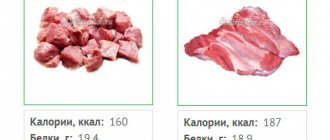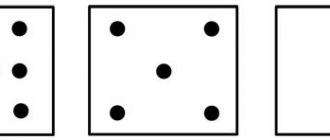History of origin
The Stone Age diet, which is what Paleolithic nutrition is called, is based on the principle of retroinduction (a return to regular food). Our ancestors, who lived during the Paleolithic times, had no idea about pizza, French fries, hamburgers, cereals, milk, sweets, buns. The same as about obesity, cellulite, chronic autoimmune diseases. The caveman's diet included only what he could get on his own. These are carcasses of killed animals, fish from rivers, vegetables and fruits, and occasionally nuts. This is exactly what, according to the developers of the paleo method, modern man should eat.
The American gastroenterologist Walter Vogtlin is recognized as a pioneer in the revival of hunter-gatherer nutrition, who published the book “The Stone Age Diet” in 1975, based on anthropological research of that time. However, his idea did not find support and was undeservedly forgotten. It was only in 2002 that scientist and nutritionist Loren Cordain gave a second life to Vogtlin's developments with the release of the book The Paleo Diet, which made him a major figure in the philosophy of nutrition of the late Paleolithic era. In his opinion, certain groups of foods that do not fit in with the gene code should be excluded from the diet of modern humans. So the caveman diet is not a diet for a week or two, but a philosophy of life.
Today, Paleolithic nutrition has been picked up and successfully used by fans of cross-fit. A diet rich in meat and fish allows you to successfully withstand difficult physical activity, build muscle mass and lose weight without difficulty.
The essence and idea of the paleo diet
Naturalness and environmental friendliness are gaining great popularity today and are becoming more and more valuable for modern people. People are increasingly striving to buy clothes made from natural fabrics (pure cotton or linen), drink the purest water from mountain streams, and eat natural foods that do not contain chemical additives. Given the current environmental situation on Earth as a whole, this is quite understandable.
The main idea of the paleo diet, the reviews and results of which are rated quite highly by many, is to eat the same foods that were part of the diet of our distant ancestors during the Paleolithic period.
Basic Rules
The paleo diet reduces appetite while speeding up metabolism. Its main difference from other weight loss methods is that weight loss will not be accompanied by a constant feeling of hunger. This minimizes the risk of slipping and starting to eat prohibited donuts. There is no need to calculate calories or grams here. Instead, you'll eat as much as you want, lose pounds, and stay healthy.
To become a real paleonaut you must follow these simple rules:
- Give preference to foods high in potassium and low in sodium.
- Choose products with a pure alkaline load.
- The diet should contain plant phytoncides, vitamins, minerals and antioxidants.
- Food must be prepared at home. No industrial food or junk food.
- They don't count calories or weigh food here. Portion sizes are determined based on individual needs. The main thing is not to overeat.
- If you don't get enough sun exposure, you should take water-soluble vitamin D.
Authorized Products
The list of allowed foods is based on the so-called Paleo pyramid and includes:
1. Lean meat, fish, shellfish.
The basis of the diet is animal proteins from the most natural and environmentally friendly meat. The ideal option is game. But if it is not available, then choose livestock or poultry raised in free-grazing conditions. Moreover, they must be fed without the use of antibiotics, feed and hormones. Give preference to homemade chicken or pork. The same goes for fish - fish caught in a local reservoir is much better than those grown in artificial conditions.
What you can eat:
- turkey, skinless chicken;
- partridges, quails, wild ducks;
- rabbit meat, hare meat;
- chicken and turkey liver;
- shrimp, shellfish, crabs;
- sea bass, halibut, tuna, mussels, mackerel, herring, pike, catfish;
- lean pork tenderloin, pasture-raised beef, veal.
2. Non-starchy vegetables and fruits.
They alkalize the body and neutralize acid obtained from meat and fish. Thanks to this, the acid-base balance is restored, which minimizes the leaching of calcium from the body and the likelihood of osteoporosis. Choose vegetables and fruits that have a low glycemic index and only slightly increase your blood glucose levels. This is what our ancestors ate. In addition to saturating the body, they are a source of healthy fiber.
3. The right fats.
Lipids are divided into monounsaturated (healthy), saturated (bad) and polyunsaturated fatty acids (Omega fats). The Paleo diet eliminates “bad” lipids from the diet, replacing them with healthy ones. They lower cholesterol and are found in oils, nuts, avocados, salmon and other fish. There are two types of PUFAs: Omega-3 and Omega-6 (less beneficial). It is important to monitor their balance and not violate the proportions.
To maintain the balance of PUFAs you can consume:
- linseed oil;
- fish oil capsules available in pharmacies and health food stores.
4. Berries.
You can eat any seasonal berries raw and make smoothies and cocktails from them.
5. Nuts and seeds.
Good options are cashews, walnuts, macadamia, pine and hazelnuts, and pumpkin seeds. Sunflower seeds and sesame seeds are best kept to a minimum.
6. Leafy green salads, herbs.
Spinach, arugula, iceberg, lollo rossa and other leafy salads will be an excellent source of vitamins and fiber.
In limited quantities:
- Eggs (no more than 2 per day).
- Alcohol. Strict Paleo excludes alcohol, but since this is a lifelong diet, you can sometimes treat yourself to a glass of quality dry wine or beer.
- Coffee and caffeinated drinks.
Prohibited Products
The food veto is imposed by the paleo diet on the following groups:
1. Cereals and legumes.
Ancient people did not know what cereals, porridges, breads and buns were. The development of agriculture, according to paleonauts, was not a blessing. Consumption of large amounts of vegetable oil, cereals and cereals leads to a violation of the PUFA ratio, a reduction in Omega-3 and a predominance of Omega-6.
2. Milk, fermented milk products.
Whole milk contains saturated fats, which increase the level of bad cholesterol in the blood. In addition, scientists at the University of California have proven that milk and most dairy products (including calcium-rich hard cheese) give the body an acid load. This leads to an imbalance in the acid-base balance. As a result, large amounts of calcium will be washed out in the urine, leading to bone loss and osteoporosis.
3. Salt (including pickles, canned food, smoked meats).
Salt consists of sodium and chlorine, which are harmful to the kidneys. Excessive salt consumption leads to heart and vascular diseases (high blood pressure, strokes and heart attacks), urolithiasis, and osteochondrosis.
4. Bad fats (trans fats), lard, fast food.
This is an artificial food that distorts the feeling of fullness, forcing you to eat huge portions. While meat proteins quickly satisfy hunger and reduce the risk of overeating to zero. What's easier to eat: two extra boiled chicken breasts or a couple of slices of pizza?
5. Any semi-finished products.
6. Carbonated sweet drinks, industrial juices.
Benefits of the Paleo Diet
- Sugar level. The paleo diet menu excludes all types of refined sugar from the diet, which has a positive effect on blood glucose levels, and also eliminates the feeling of fatigue that occurs when blood sugar levels drop. If you have diabetes, you should consult an endocrinologist to determine whether the paleo diet is suitable for you. In any case, if the goal is weight loss. then monitoring your sugar levels is a great way to do this.
- Gluten Free. The paleo diet excludes any products made from wheat or other grains that contain gluten. Therefore, the paleo diet is great for those who are also following a gluten-free diet. There is some evidence that gluten is problematic for the digestive system and leads to weight gain, and is also an allergen.
- Quality and duration of sleep. After eliminating artificial foods from the diet, a person finds that the body naturally gets tired in the evening. This happens because what the brain releases as a signal that it is time to get ready for bed is not masked by artificial substances from refined foods. And when natural fatigue appears in the evening, you need to give the body the opportunity to rest. Then in the morning you can wake up early, but at the same time feel energized. On a paleo diet, the body returns to its natural circadian rhythm.
- More energy without counting calories. By following a paleo diet, the body receives well-balanced food, which contains proteins, fats and carbohydrates from natural products. This is a great way to be active during the day without resorting to, for example, energy drinks and other tonic drinks and remedies. Unlike other diets that rely on reducing calories, the Paleo diet allows you to eat food until you feel full enough. And also eat at any time when you feel hungry. Therefore, when energy is needed, a person does not experience a shortage of it.
- Paleo is a cleanse for the lazy. By eliminating all harmful and artificial additives from the diet: trans fats, monosodium glutamate, refined sugar, gluten and others, the body gets unloaded. At the same time, unnatural food is replaced by antioxidants from fruits and a large amount of fiber from vegetables, which gradually contributes to the natural cleansing of the body. Overall, the paleo diet has a detoxifying effect. Which has a positive effect on well-being and consciousness. The most interesting thing is that detox is not associated with restrictions on the amount of food.
There is no need to limit yourself or drink only green tea and eat green salad. You can eat your meals as normal (following paleo principles), so it's a great detox for the lazy.
These benefits of the Paleo diet are more about health issues. You get a slender and toned body and a beautiful figure naturally, you receive it as a bonus to all of the above.
Advantages and disadvantages
The advantages of the Paleolithic diet include:
- A balanced diet allows you to receive 100% healthy vitamins, minerals and trace elements. With proper diet planning, the daily intake of vitamin C, B6, B12, magnesium, folic acid, potassium, calcium, selenium, etc. is observed.
- Non-starchy carbohydrates increase insulin resistance, which allows you to eat more foods with minimal risk of high blood sugar.
- There is no depression, discomfort, fatigue or drowsiness. You remain energized and amazingly productive.
- It goes well with physical activity and is suitable for professional athletes.
- Due to the lack of salt, blood pressure is normalized.
- A large amount of protein in the diet speeds up metabolism. Thanks to this, weight is reduced and fat deposits are burned.
- Increasing the intake of minerals and trace elements increases bone density and improves joint mobility.
- Puts many autoimmune diseases into remission (diabetes type 1 and 2, arthritis, Crohn's disease, colitis, intestinal diseases, multiple sclerosis, etc.).
- Helps improve bowel function and relieve heartburn.
- Thanks to the absence of caffeine and alcohol, the quality of sleep improves and insomnia goes away.
- Already in the first two weeks of the paleo diet, the level of “good” cholesterol increases, which is the prevention of thrombosis and atherosclerosis.
- Omega-3 fatty acids thin the blood and prevent tachycardia.
- Clear skin, healthy shiny hair, strong teeth and nails.
Compared to the advantages, the disadvantages of such a diet are very minor:
- Due to improper diet planning and lack of carbohydrates, some athletes report fatigue after training. To prevent this, increase the amount of high-carb fruits (bananas, pineapples, cherries).
- High cost of products.
- High-quality meat, fish, and vegetables are usually more expensive than mass market ones. Therefore, paleo nutrition is considered expensive.
- In restaurants and catering establishments it is almost impossible to find food that corresponds to the principles of hunter-gatherer nutrition.
Disadvantages of the Paleo Diet
- Don't just comply. It will take enormous willpower and ingenuity not to relapse. Birthday cake? Pizza or rolls in a cafe with friends? Grandma's apple pies? Ice cream on a walk? Popcorn at the movies? All this is prohibited in the paleo diet. The temptations are endless. Even regular dinners or business lunches practically do not fit the principle of the paleo diet. Therefore, it is best to purchase special containers and prepare food at home.
- It is not cheap. Fast food and other similar foods are not expensive today, but such food negatively affects your figure and health. And the calorie content of the product, which is written on the label, does not matter at all.
- Additional time. You will have to carefully choose food, focusing primarily on the composition and quality of the product, and not on its price. It would be great if these points can be combined. In addition, in a cafe or restaurant you will become one of the most picky and demanding visitors, asking the waiter in detail about the composition of the dish and all the ingredients. However, by developing the habit of paleo lunch boxes, you can save a lot of money.
- It's slow. The Paleo diet is a systematic approach. Like working for the long term. It makes no sense to switch to a paleo diet “urgently before a holiday or vacation in order to urgently lose weight in 3-4 weeks.” In this case, you will not be able to lose weight quickly and get instant results, and your body will not experience all the previously listed advantages and benefits of the paleo diet.
List of allowed foods for the paleo diet
Menu
For 1 day
For those who want to get acquainted with a new nutrition philosophy, we offer a paleo diet menu for the day.
Breakfast:
- half a melon;
- fried salmon steak – 350 gr.
Dinner:
- boiled king (or just any large) shrimp – 7-8 pieces;
- salad (bunch of spinach, small carrots, 1 cucumber, 2 tomatoes, lemon juice, olive oil, hot sauce).
Afternoon snack:
- half a glass of blueberries (or any other berry);
- some almonds.
Dinner:
- a couple of lean pork steaks;
- 5 florets of steamed broccoli;
- salad (“Iceberg”, one tomato, a quarter of Crimean purple onion, half an avocado, lemon juice).
If you feel hungry during the day, you can allow an extra portion of almonds and cold pork.
For 7 days
If your body accepts this diet normally, you can continue to eat this way, using the approximate menu for the week.
Monday
- Breakfast: two-egg omelette with corn oil; cup of green tea soursop.
- Lunch: vegetable mix with boiled chicken; a handful of almonds; a glass of still mineral water.
- Afternoon snack: walnuts; two small carrots.
- Dinner: boiled veal; celery; Herb tea.
Tuesday
- Breakfast: salad of grated carrots, apples, raisins and walnuts; Cup of tea.
- Lunch: vegetable sauté; pike perch baked in foil; a glass of freshly squeezed juice.
- Afternoon snack: dates.
- Dinner: grilled turkey; several florets of broccoli; dried fruits compote.
Wednesday
- Breakfast: 2 soft-boiled eggs; a handful of any nuts; vegetable fresh
- Lunch: vegetable salad with tuna; berry compote.
- Afternoon snack: dried apricots; macadamia nuts.
- Dinner: fried beef; zucchini stewed in tomato; 2 peaches.
Before going to bed, drink a cup of tea.
Thursday
- Breakfast: scrambled eggs and bacon; seasonal or frozen berries; glass of orange juice.
- Lunch: tomato soup; apples.
- Afternoon snack: unsalted pistachios.
- Dinner: salmon baked in foil; boiled Brussels sprouts; fresh tomato
Friday
- Breakfast: fruit with almonds; Orange juice.
- Lunch: Chinese cabbage with shrimp and sauce; roast turkey or chicken.
- Afternoon snack: a handful of dried fruits.
- Dinner: chicken in the oven; any vegetables; Cup of tea.
Saturday
- Breakfast: cabbage rolls; radish or tomato; apple juice (diluted with water 50*50).
- Lunch: lamb shish kebab; grilled vegetables; tomato juice.
- Afternoon snack: prunes.
- Dinner: beef stew with vegetables; kiwi; water without gas.
Sunday
- Breakfast: omelet with tomatoes and herbs; berries.
- Lunch: quail baked in the oven; cucumber salad; vegetable fresh
- Afternoon snack: baked pumpkin.
- Dinner: stewed rabbit; tomatoes with herbs; juice.
During the day you can snack on cold meat, vegetables, and berries. Be sure to follow the drinking regime.
Application in medicine
There are cases where Paleolithic nutrition has helped people with autoimmune diseases put their diseases into remission. American doctor Sarah Ballantyne described her personal experience in the fight against the disease. One of her books about the nutrition of ancient people, “The Paleo Approach,” became a bestseller. Having personally tested the paleo diet on herself and adapted it to herself, making it more strict, Sarah lost weight and got rid of type 2 diabetes and lichen planus.
Dr. Ballantyne's approach is called the Autoimmune Protocol (AIP). It has been tested by people with the following autoimmune diseases:
- skin (scleroderma, lupus erythematosus, psoriasis, Sjogren's syndrome, vitiligo);
- arthritis;
- scleroderma;
- Crohn's disease, ulcerative colitis;
- multiple sclerosis;
- autoimmune thyroiditis;
- insulin-dependent diabetes mellitus type 1;
- primary biliary cirrhosis and many others.
What new did Sarah offer? The AIP diet has become more restrictive. She forbade:
- eggs;
- nuts;
- any grains and cereals (including cocoa, coffee, spices);
- nightshades (potatoes, tomatoes, sweet peppers, chili peppers, eggplants, pepper-based spices);
- foods containing gluten;
- alcohol;
- sugar and any sweeteners;
- fructose;
- semi-finished products, chemically processed food;
- NSAIDs (non-steroidal anti-inflammatory drugs) such as ibuprofen, aspirin, etc.
Permitted for use:
1. Vegetables:
- Green (due to their content of vitamins B, A, C and K).
- Colored (due to their content of flavonoids and polyphenols). It is recommended to consume vegetables, at least 3 colors, per day. You can add bright berries.
- High in sulfur (cruciferous vegetables, mushrooms, asparagus). Cruciferous vegetables include cauliflower, cabbage, Brussels sprouts, red cabbage, broccoli, radishes, radishes, and turnips.
- High in iodine (seaweed, sea kale).
It is recommended to consume three hundred grams of each type of vegetable daily and at least a bowl of any iodine-containing algae with the exception of spirulina, since it is an immunomodulator.
2. Meat from free-range (or wild) animals. It is organic, so it is recommended at least 5 times a week.
3. Fish (at least three times a week):
- caught in water bodies, not industrially grown;
- fatty cold-water fish (salmon, mackerel, sardines, herring, anchovies, tuna, carp).
4. Bone broth (due to its high glycine content, which is good for bones).
5. Coconut oil.
6. Probiotics. These could be dietary supplements or homemade cottage cheese made from coconut milk.
AIP is prescribed and monitored only by the attending physician after undergoing an examination. It is not recommended to choose it yourself!
Prohibited foods on the paleo diet
Of course, it is difficult to imagine yourself in the place of people who lived several thousand years ago, when the world was completely different. There are some foods we can eliminate from the Paleo diet with absolute certainty. Others are the subject of constant debate or are considered “permissible”, but with reservations and restrictions.
The Paleolithic era lasted a very, very long time and included so many changes that it is simply impossible to take into account everything. Therefore, the boundaries of what is permissible remain at the discretion of everyone.
- Artificial additives and preservatives. Food additives that should be avoided not only by paleo dieters, but by anyone who cares about their health: monosodium glutamate (MSG), nitrates, potassium bromate, saccharin, artificial colors, artificial sweeteners and GMOs.
- Fast food. If you are watching your figure and want to stay healthy, then fast food options are not suitable for you. Refined oils, trans fats, sugar, breading and artificial sauce ingredients have nothing to do with healthy nutrition. The relatively small number of calories that are sometimes listed on the package does not make any difference.
- Legumes and grains. The Paleo diet excludes all types of grain legumes. Wheat, oats, rye, beans, soybeans, buckwheat, rice and other crops are prohibited. Thus, you give up bread, porridge, buns and many other products that were on your table.
- Milk products. All dairy products on the paleo diet are on the prohibited list.
By the way, many people are lactose intolerant, and humans are the only creature that drinks milk after infancy.
To achieve quick results and lose weight, you need to limit the amount of carbohydrates as much as possible (the norm is 60 g daily).
Ancient people could not have had the way or ability to drink milk or produce dairy and fermented milk products such as kefir, yogurt and cheese. Therefore, if you decide to follow a paleo diet, you should avoid burrata, parmesan and sour milk.
- Potato. Potatoes are so popular that it seems impossible to exclude them. The vegetable grows in the ground, and it might seem natural that a paleo person would randomly find some wild potatoes. But as it turns out, growing potatoes requires a lot of effort. Therefore, the need for potatoes only increased when people stopped hunting and gathering, and began to stay in one place longer, farming and raising livestock.
- Alcohol. There is a theory that ancient man could have consumed overripe and slightly fermented fruits and vegetables. However, this is a very bold theory. Alcohol is excluded on the paleo diet.
Therefore, you will have to completely forget about milk, canned food, sweet buns, smoked meats, and pickles.
This is by no means an exhaustive list of foods prohibited on the paleo diet. However, this list will help give you a general idea of the paleo diet.
Read about the NO-CARBOHYDRATE DIET for weight loss HERE
Criticism
While those who choose the Paleo diet enjoy excellent results that go well beyond endurance and leanness, opponents question the principles of such nutrition.
In 2020, the prestigious British Dietetic Association recognized cave eating as the worst option for losing weight. According to members of the Association, it is unbalanced, questionable, and risky due to a lack of nutrients.
Nutritionists also believe that the scientific basis for the benefits of such a diet is only partially correct, because evolution does not stand still, which means that our genes differ from the genes of our ancestors.
Some experts emphasize the dubious results when losing weight, since large plumbs cannot be achieved here. Gastroenterologists and therapists note that the effectiveness of treating intestinal diseases and autoimmune diseases has not been proven.
Despite criticism from experts, the diet continues to gain popularity. Among her fans were such Hollywood celebrities as Miley Cyrus, Megan Fox, Jessica Biel, Jack Osbourne and even the stunning Uma Thurman.











